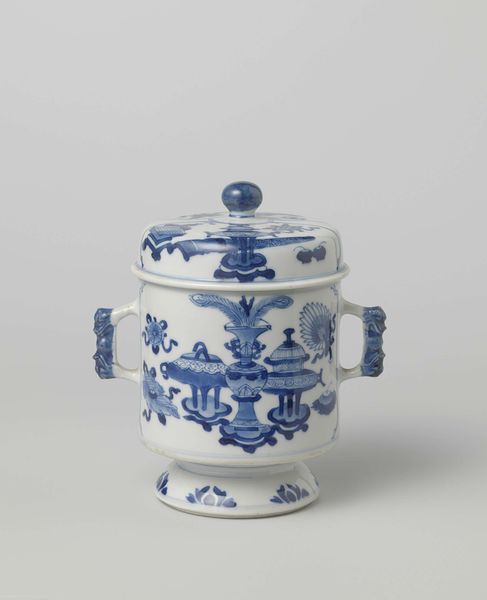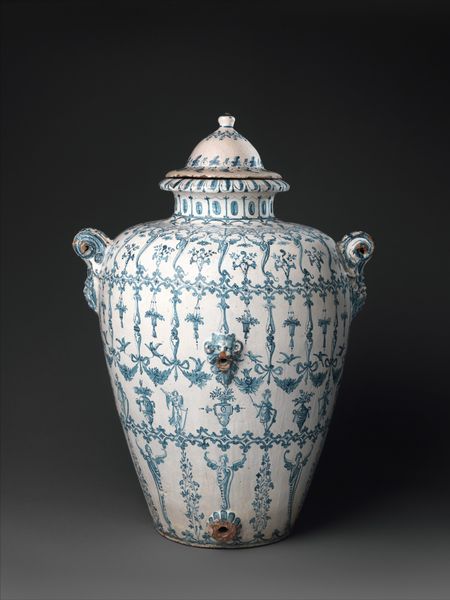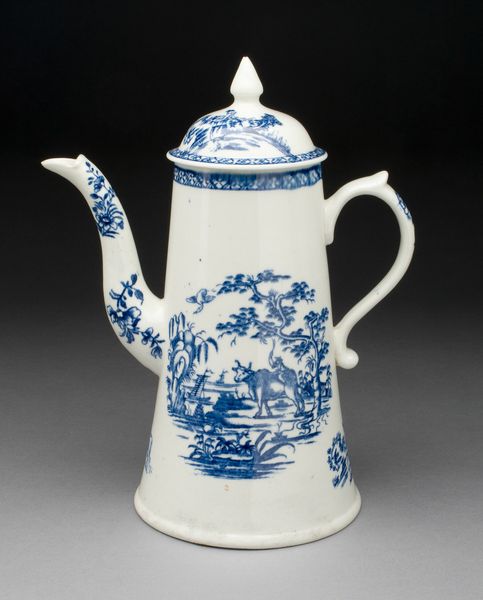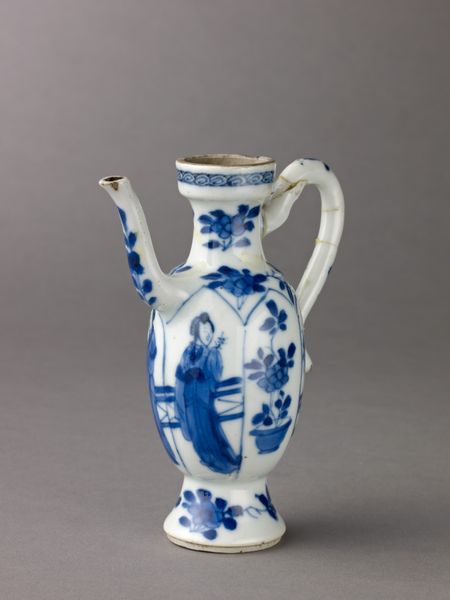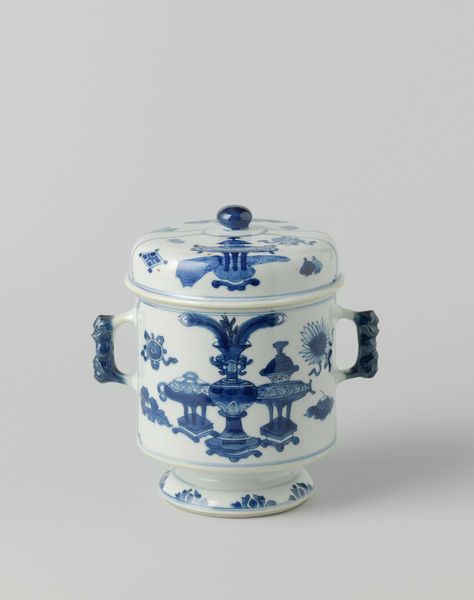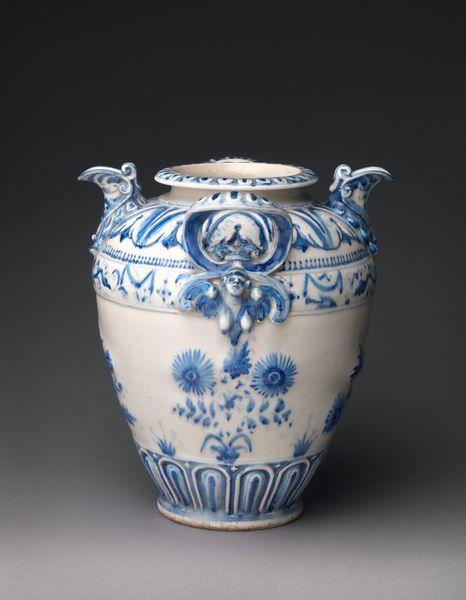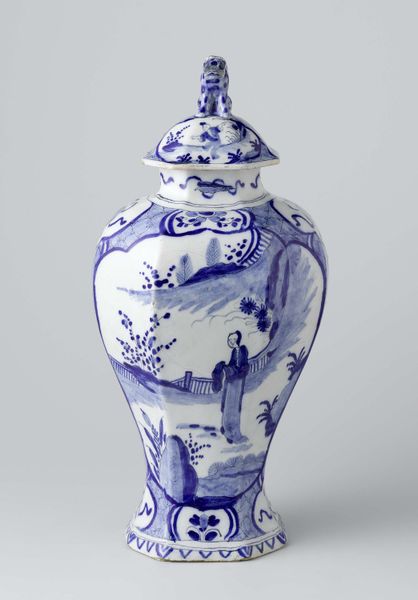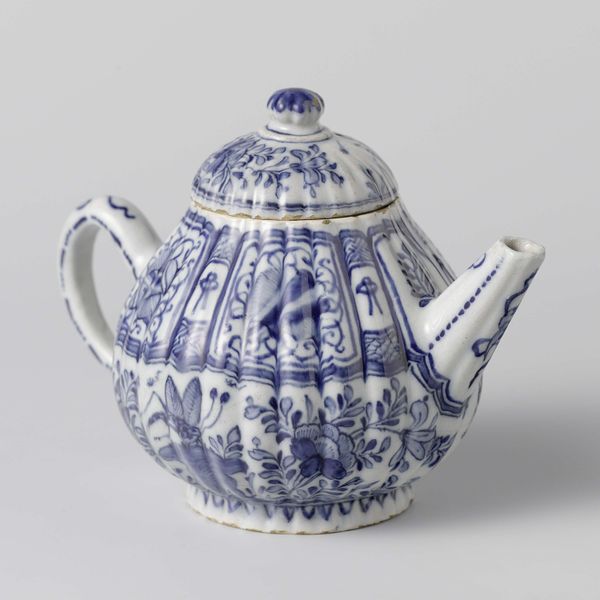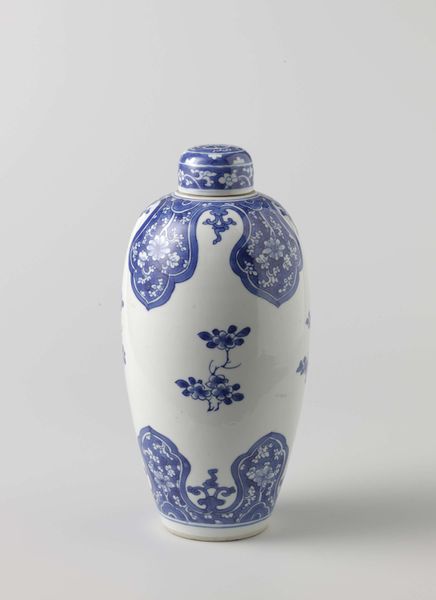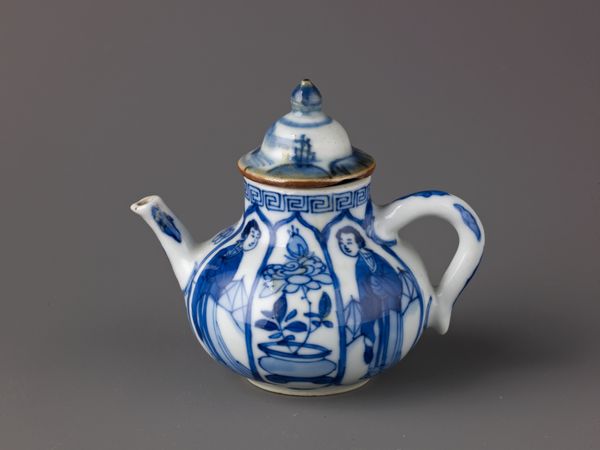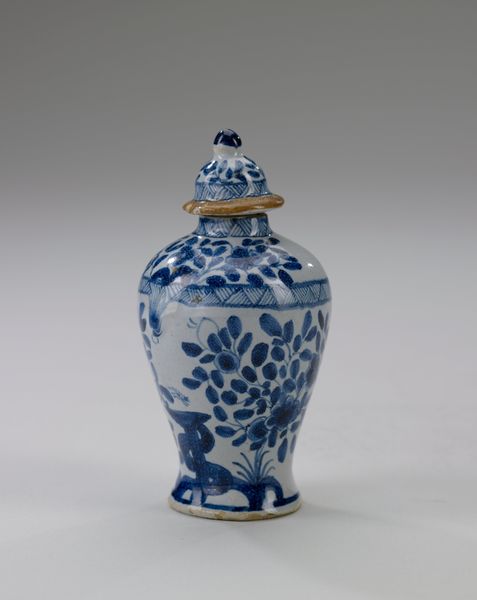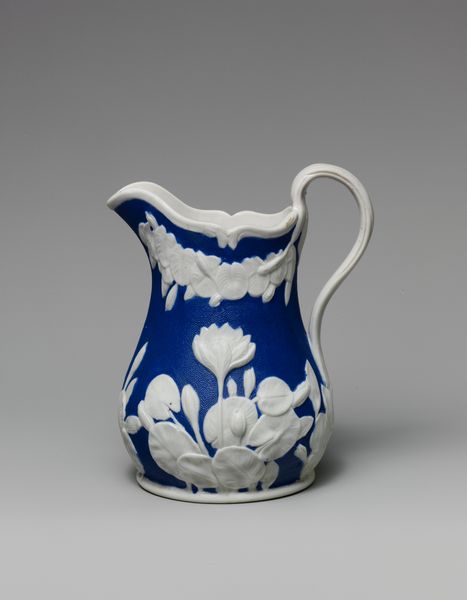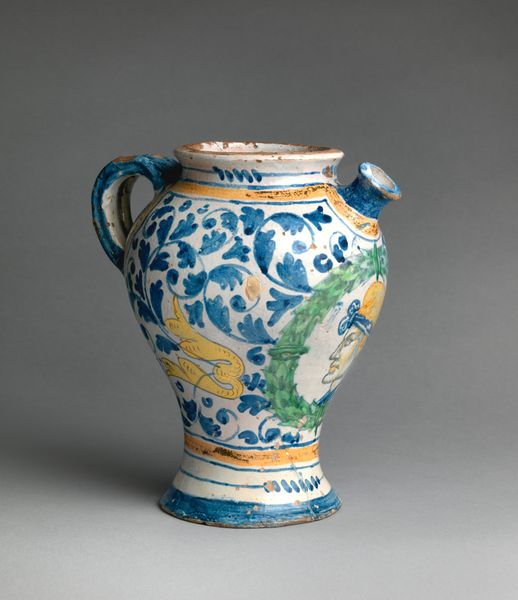
Pear-shaped covered jar with precious objects and flower sprays c. 1700 - 1724
0:00
0:00
anonymous
Rijksmuseum
ceramic, porcelain
#
asian-art
#
ceramic
#
porcelain
#
stoneware
#
ceramic
#
decorative-art
Dimensions: height 24.5 cm, diameter 9.8 cm, diameter 16 cm, diameter 10 cm
Copyright: Rijks Museum: Open Domain
Curator: This delicate, covered jar comes to us from the early 18th century, made anonymously between 1700 and 1724. Notice its pear shape, crafted from fine porcelain, and decorated in cobalt blue with images of precious objects and flower sprays. Editor: It’s wonderfully preserved. I'm struck by its subdued elegance, and the interplay of blues and whites almost gives it a dreamy, ethereal quality. I imagine its surface would be quite smooth. Curator: Indeed. The floral motifs – particularly the lotus blossoms near the base – certainly speak to ideas of purity and spiritual awakening, while the covered form suggests ideas of guarded secrets or perhaps hidden potential. The “precious objects,” arranged within the central panel, further solidify a sense of prosperity and cultural capital. Editor: Do you think it was crafted with daily use in mind? Porcelain of this caliber indicates a wealthy household, suggesting the jar likely held precious oils or perfumes. You can also see a social distinction happening—the laborious process used to produce this kind of object in high volume created the distinction, imbuing it with class and sophistication. Curator: It likely served both practical and symbolic purposes. The arrangement of objects, the lotus, even the stylized landscape, carry established cultural meanings, layering another level to how one might engage with the vessel. Did those that made them really believe in the power of the signs, or were they simply making a product in demand? It is easy to fetishize those with social cache, as if they really "mean" something and it gets tiring. Editor: A product born of extensive global trade. The raw materials would have had to travel far before finally reaching their market—another element that contributed to its prestige. Curator: I find myself drawn back to the cover— the very apex of the vessel's cultural meaning. Does the symbol denote the real power, or is it there to convince its holders? Editor: Thinking about its production process has given me a better idea about how this was viewed back in the early 18th century, the material speaks. Curator: And through considering its images we are invited into an echo chamber of cultural memory, that continues to engage viewers with its symbolic language.
Comments
No comments
Be the first to comment and join the conversation on the ultimate creative platform.
